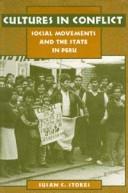| Listing 1 - 2 of 2 |
Sort by
|
Book
ISBN: 0520967151 9780520967151 9780520293793 9780520293809 0520293797 0520293800 Year: 2017 Publisher: Oakland, California
Abstract | Keywords | Export | Availability | Bookmark
 Loading...
Loading...Choose an application
- Reference Manager
- EndNote
- RefWorks (Direct export to RefWorks)
Based on spontaneous conversations of shantytown youth hanging out on the streets of their neighborhoods and interviews from the comfortable living rooms of the middle class, Jennifer Roth-Gordon shows how racial ideas permeate the daily lives of Rio de Janeiro's residents across race and class lines. Race and the Brazilian Body weaves together the experiences of these two groups to explore what the author calls Brazil's "comfortable racial contradiction," where embedded structural racism that privileges whiteness exists alongside a deeply held pride in the country's history of racial mixture and lack of overt racial conflict. This linguistic and ethnographic account describes how cariocas (people who live in Rio de Janeiro) "read" the body for racial signs. The amount of whiteness or blackness a body displays is determined not only through observations of phenotypical features-including skin color, hair texture, and facial features-but also through careful attention paid to cultural and linguistic practices, including the use of nonstandard speech commonly described as gíria (slang). Vivid scenes from daily interactions illustrate how implicit social and racial imperatives encourage individuals to invest in and display whiteness (by demonstrating a "good appearance"), avoid blackness (a preference challenged by rappers and hip-hop fans), and "be cordial" (by not noticing racial differences). Roth-Gordon suggests that it is through this unspoken racial etiquette that Rio residents determine who belongs on the world famous beaches of Copacabana, Ipanema, and Leblon; who deserves to shop in privatized, carefully guarded, air conditioned shopping malls; and who merits the rights of citizenship.
Black people --- Human skin color --- Race identity --- Social aspects --- Language --- Brazil --- Ethnic relations. --- beaches. --- blackness. --- brazil. --- cariocas. --- citizenship. --- class. --- classism. --- communities. --- conversation. --- copacabana. --- daily life. --- ethnographic. --- ethnography. --- interview. --- ipanema. --- leblon. --- linguistic. --- linguistics. --- middle class. --- neighborhoods. --- oral history. --- poverty. --- race issues. --- race. --- racial conflict. --- racial etiquette. --- racial identity. --- racism. --- rio de janeiro. --- shantytown. --- structural racism. --- true story. --- whiteness. --- young people. --- youth.

ISBN: 0520916239 0585129614 9780520916234 9780585129617 9780520200234 0520200233 0520086171 0520200233 Year: 1995 Publisher: Berkeley University of California Press
Abstract | Keywords | Export | Availability | Bookmark
 Loading...
Loading...Choose an application
- Reference Manager
- EndNote
- RefWorks (Direct export to RefWorks)
"Ethnography by a political scientist focuses on how urban poor have changed their perceptions of the State, citizenship, class and gender relations, and democracy and have movilized radical social movements. Analysis includes historical and ethnographic components"--Handbook of Latin American Studies, v. 57.
Social movements --- Urban poor --- Social conflict --- Sociology & Social History --- Social Sciences --- Social Conditions --- Class conflict --- Class struggle --- Conflict, Social --- Social tensions --- Interpersonal conflict --- Social psychology --- Sociology --- City dwellers --- Poor --- Movements, Social --- Social history --- Political activity. --- Political activity --- Peru --- Politics and government --- Conflits sociaux --- Mouvements sociaux --- Pauvres en milieu urbain --- Activité politique --- Pérou --- Politique et gouvernement --- Social movements. --- Urban poor. --- 20th century peruvian history. --- civilian rule. --- class consciousness. --- class difference. --- clientelism. --- contemporary peru. --- deference. --- ethnography. --- hegemony. --- ideology. --- independent. --- latin american history. --- lower class politics. --- mass public. --- nation state. --- oligarchy. --- oppressed classes. --- oppression. --- participant observation. --- peru. --- peruvian history. --- political culture. --- politics. --- poor people. --- popular culture. --- poverty. --- radical political thought. --- radical politics. --- shantytown. --- social activists. --- social movements. --- state. --- urban poor.
| Listing 1 - 2 of 2 |
Sort by
|

 Search
Search Feedback
Feedback About UniCat
About UniCat  Help
Help News
News